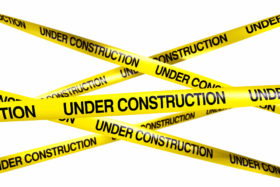
Use code BUILD for 20% off
Book here!
Use code BUILD for 20% off
Book here!Last year’s deluge on the Somerset Levels, described as a ‘once-in-a-hundred-years’ event at the time, has come to pass again.
This area has suffered for centuries, but no one can remember it being quite this bad. Aspiring self-builders should know that the risk of flooding in certain areas is real and should take it seriously when plot hunting.
Planning permission is sometimes given for housing on known flood plains as local authorities struggle to find enough land to allocate for residential dwellings.
But if flood plains do what they say they do and if you build on one without taking some sort of mitigating action, eventually your site will be inundated. Severe water damage can be repaired, but insurers are more reluctant to offer cover in high-risk areas. You might make one claim, even two, but after that premiums become punitively expensive and can have a material effect on the value of your home. Who wants to buy an uninsurable house?
There are sensible steps you can take to assess the likely flooding risk before you commit to buy a plot.
Check the Environment Agency website to see if your postcode falls within a known flood risk area. If so, it is likely that your local authority will insist that a formal flood risk assessment be undertaken, which will accompany any planning application.
Carried out by specialist assessors, this flood risk report will look at the topography relative to local watercourses, assess the risks and check historical flooding activity on the site. The report will recommend suggested mitigation where possible. These online guides are not infallible and sometimes a little more research is called for.
Seek out the advice of local farmers and long-serving parish councillors for specific information about what actually happens on your chosen plot, rather than what a computer programme calculates might happen.
With insurers, risks are often allocated to whole postcodes that may well ignore the local topography – making a plot on top of a hill theoretically as risky as one at the bottom.
There are steps you can take in areas where flooding is likely. Raising the whole house off the ground is not uncommon, for example. Using piled foundations and ‘stilts’ (sometimes a couple of metres high) can allow any floodwater to pass harmlessly beneath the house. In less risky areas, floodwater can be managed by the creation of low lying pond areas, new drainage ditches or even purpose built underground storage chambers created using specially designed stackable plastic forms that look a bit like milk crates.
This does come at a cost, but if well managed then even a challenging plot could be made suitable for building.

